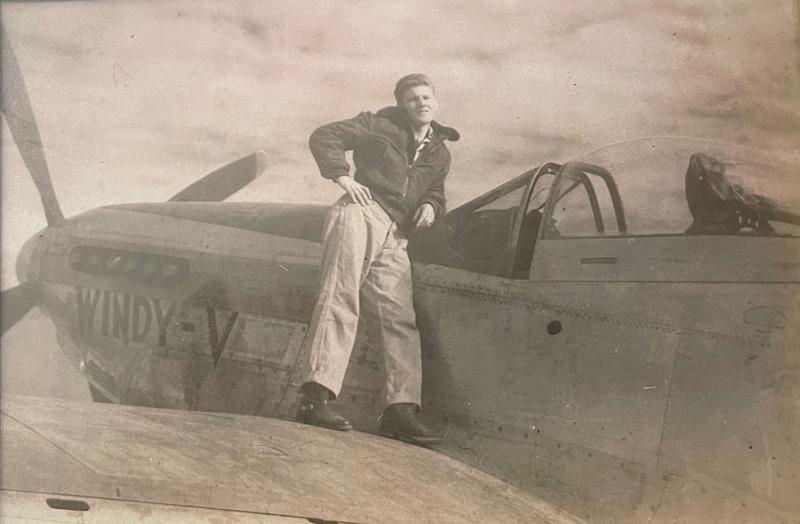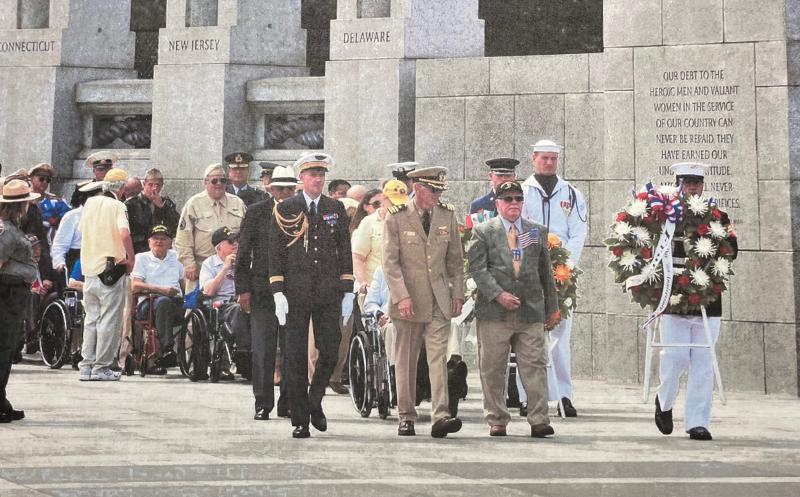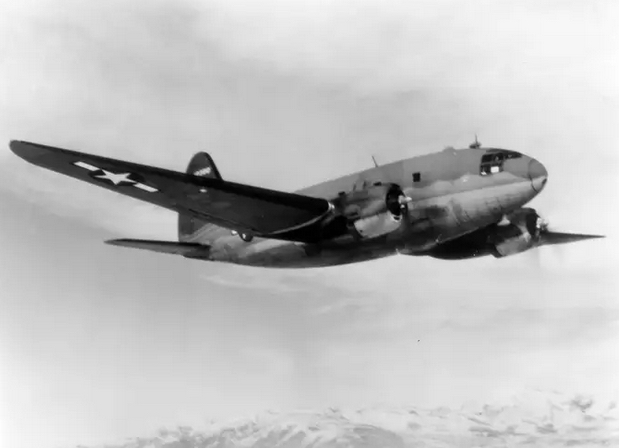World War II vet served duty in China
Growing up in Jersey City, N.J., George McCarthy never imagined he would end up serving his country during World War II in China.
But after basic training, George, who will turn 99 years old in May, was assigned to a U.S. Army Air Corps base in Kunming in southwest China. While the eyes of the world were on fighting in Europe and the Pacific, George, assigned to the 14th Air Force, was among a group of 250,000 servicemen serving in China.
Few people realize that China and America were allies during World War II. The U.S. policy in China was to supply and train Chinese troops to fight the Japanese in an effort to keep Japanese troops busy fighting on mainland Asia and not against the Americans in the Pacific Theater.
World War II history buffs may recognize the base name of Kunming because it was where the famous First Army Volunteer Group – the Flying Tigers – was based.
When George reported for duty in 1944, the Flying Tigers had been disbanded, but their legend preceded them.
When the war broke out in December 1941, George was 17 and too young to enlist or be drafted. He worked in a Jersey shipyard building Navy destroyers for one year until he joined the service in 1943.
The youngest of four brothers, George was the only one who served overseas. George's mother passed away when the children were young, and the family was raised by their father. “He was the only one in our neighborhood who had a job during the Great Depression,” he said. “I can't say enough how great a man he was.”
A vital supply line
While George was on an American base, it was guarded by Chinese nationalists. When he arrived in 1944, communist Chinese were starting to infiltrate areas not held by the Japanese. “We really had to be careful who we talked to and what we said. We also had to be diplomats,” he said.
In order to reach Kunming, American pilots had to traverse 500 miles from Assam, India, and over The Hump, the unforgiving Himalayan Mountains with peaks higher than most planes could fly. Mainly due to extreme weather conditions, The Hump claimed more than 1,000 servicemen and 600 planes, which are conservative estimates. That's after supplies were shipped by vessel from the U.S.
But it was critical to keep supply transports in the air to Kunming. The U.S. began the transport service in April 1942 after the overland Burma Road route was taken over by the Japanese.
George learned to speak some Chinese, which he can still recall today, nearly 80 years later. He said he never did get accustomed to Chinese food and was told not to drink the water.
A history buff, George said the everyday scenes in that part of China reminded him of photos he had seen in books showing Chinese life in the 1800s. “It looked like nothing had changed for many years,” he said.
In the air transport command, his job was to help coordinate supplies flown in from India and then shipped to other U.S. bases in China.
The shipments comprised as much as a C-47 cargo plane could hold, including people and even horses.
He and other servicemen played a lot of softball when not on duty, and one of the players was Gen. Claire Chennault, who was in charge of the Flying Tigers. “He always wanted to pitch, so we let him,” George said with a smile.
After the war ended Sept. 2, 1945, George spent almost another six months in China closing up bases and opening a base in Shanghai. It was a long trip home via ship to South Korea to Tokyo and then across the Pacific Ocean to Seattle. He traveled across the United States on a troop train, where they were treated like royalty.
After the war
George settled back to life in Jersey City, where by chance he met his future wife of 52 years, Dolores. George said one of his fellow soldiers from Kunming tracked him down and introduced him to his girlfriend. It didn't take long for that to change, and the couple was married and made their home in nearby Bayonne, N.J., where George lived in the same house since 1947.
The couple had five children – George, James, Sharon, Lisa and David. He now has six grandchildren and six great-grandchildren. Dolores passed away in 1999.
George moved in with his daughter Lisa and son-in-law Peter Zaloom in December 2021 at their home in the Lochwood community near Lewes. “The house was becoming too much to manage. I'm more at ease now,” he said.
He has nearly been adopted by neighborhood friend Charlie Sewell, who chauffeurs him to outings, including bingo at the Elks Lodge. “He's become my right and left hand,” George said.
He worked for 30 years for American Can Co., the City of Bayonne for 20 years and with his son who owned an image lighting business for 13 years.
In 2006, he took a trip to China with his son David to visit his son's wife's family.
As a geography buff, it was a trip of a lifetime for George, but it got off to a very rocky start. “We were on a Chinese Air plane going to Beijing, and we noticed the plane's right engine was on fire and the cabin was filling with smoke,” he said.
He said there was a lot of commotion on the plane, but the fire went out and the plane landed without incident.
Ceremonies at WWII Memorial
George has had the honor to participate in two wreath-laying ceremonies at the World War II Memorial in Washington, D.C. He said each year on Sept. 2, World War II veterans lay wreaths at the memorial wall for all of the Allied countries fighting in the Atlantic and Pacific theaters. His wreaths were for France in the 2018 ceremony and for Australia in 2019.
Blessed with great health, George was the only veteran taking part in the ceremony who was not in a wheelchair.
Who were the Flying Tigers?
The First American Volunteer Group, known as the Flying Tigers, were members of the Republic of China Air Force and were not members of the U.S. military during their time with the Tigers.
They were hired by a company called CAMCO to help oppose the Japanese invasion of China, serving from December 1941 to July 1942.
All had prior military backgrounds and were hired from the U.S. Army Air Corps, Navy and Marines. The Tigers, who were trained in Burma, comprised three squadrons with 30 P-40 planes in each group. They never lost an air battle and only lost 10 members in action, including seven who were killed in training accidents.
Part of their mission was also to assist the British who were defending Burma, the route of a critical supply line to China.
On July 4, the Flying Tigers were integrated into the 23rd Fighter Group.
























































